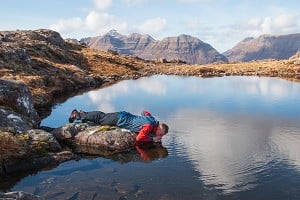
Dan Bailey field-tests his second compact water filter in two months. Why is he particularly taken with this design...?
Our rivers - like our utility company bosses - are full of crap. But up in the hills it's safe to drink the water, right? Well not always. In the proper middle of nowhere you're probably alright to sup from the nearest burn (no guarantees); but anywhere with a high density of walkers or livestock - that's most of the Lake District or northern Eryri, close to busy crags or the more popular Munro routes - it's wise to boil, treat or filter stream water. And then there are those days when you're up high for hours, and the only sources are sludgy pools in the bog. Filtering is the best way to make doubtful water potable, but you're only likely to carry one if it's light, compact and convenient. The QuickDraw is all of those things. In fact, for hillwalking, running and climbing in the UK it's probably the best I've used.
It was only a couple of months ago that we reviewed something similar, the LifeStraw Solo. I liked that filter a lot, but the fact that it is not sold with a compatible soft flask is its major drawback.
With their alternative customizable take on the mini straw-style filter Platypus give you options that LifeStraw don't, and I think this makes the QuickDraw a better bet for a lot of users.
Weight and size
Fitting in the hand, and small enough to carry in a pocket, this thing is properly compact. It's light too, with the cartridge weighing just 69g (82g with the drinking attachment fitted). The very weight-conscious might note that LifeStraw's Solo is only 48g, but for most people that difference is unlikely to swing the choice one way or another.
What it filters
Like the Solo, the QuickDraw is a hollow fibre filter, drawing water through a mass of tiny straw-like filaments with a pore size of 0.2 microns that removes 99.9999% of bacteria and 99.9% of protozoa including nasties like Giardia, Cryptosporidium, E. coli, Salmonella and Cholera. Of course it won't stop anyting smaller than 0.2 microns, and it's not designed to filter chemical contaminants in agricultural or industrial runoff. But it should certainly see you covered for upland water sources pretty much worldwide, maybe even Devon and Surrey tap water. The microporous 'net' will also trap microplastics, something that's increasingly recognised as an issue (maybe you'll want to routinely use it at home?!).
The QuickDraw can filter up to 3 litres per minute with normal squeeze pressure - you have to suck and squeeze a bit, but it's only hard work if the pores have got clogged with debris. Using silty or very peaty sources is going to gum things up and may necessitate some in-the-field cleaning (see Maintenance); better to use clear water whenever possible.
It's customizable
The reason this model is so versatile and user friendly is that it comes with various adapters and attachments, and can be bought in different sets with the crucial option of including a soft bottle to hold the 'dirty' water, something the LifeStraw Solo conspicuously lacks. Three sizes of this reservoir are available - 1, 2 and 3 litres.
At the 'clean' end, the QuickDraw fits two different screw-on adapters: a drinking nozzle; and a threaded bottle attachment. With the addition of a cap to seal the end, and a little washer used only when cleaning the filter, there are a lot of small parts which would be easily lost: you'll have to supply your own mesh bag to keep them all together.
With the nozzle fitted, you simply screw the filter into the soft bottle holding unfiltered water, and suck straight through it. That's how I've generally used it, carrying water from a burn or loch in the 1L 'dirty' bladder that comes supplied with the basic 1L set - something that obviously means you're not restricted to drinking at source. For carrying it full of water, the drinking spout has a sturdy waterproof cap; mine fits a bit loosely but doesn't seem to leak in my pack.
The durable 'dirty' soft flask is really good, with a wide mouth for easy filling, and a useful carry handle. This reservoir fixes with a secure bayonet design of Platypus' own making, and in addition, like the LifeStraw alternative, the dirty end of the filter can also be screwed into a standard 28mm thread so you can use a generic disposable bottle for your pre-filtered water. It's worth noting that a lot of bottle necks are either smaller or larger than this size, so you do need to check it fits your chosen vessel before leaving home.
If you want to fill a separate 'clean' bottle you can easily do so by squeezing water through the drinking nozzle. Alternatively, fit the threaded bottle connector. This 'ConnectCap' attaches to all Platypus soft bottles and 28mm-thread disposable plastic drinks bottles. The fitting also has a hose attachment point should you want to set up a gravity system at camp, or fill your water bladder directly through the drinking hose (a nice touch).
Options
The Quickdraw is available in various sets:
Filter alone (£50)
Filter and 1L Filter System (£60): the basic setup, the one I've been using out in the hills, comes with the 1L 'dirty' soft bottle that is probably the best size for UK use if you're carrying water as you go.
Filter and 2L Filter System (£75): a bigger 'dirty' reservoir that may be preferable in drier climates with longer distances between sources.
Filter and 3L Gravity Filter System (£85): A bigger bag again, which can be hung from a tree; plus a hose setup for gravity-fed filtering in camp, with a nifty cap which screws into various bottle sizes and includes a vent to allow air to escape when filling a hard-sided bottle like a Nalgene. This can also be used as a squeeze filter like the other systems.
Set up in gravity mode, it can do up to 1.75 litres per minute, say Platypus. I can only achieve a slow drip, but if you're filling bottles at camp that should be fine.
Good value?
It's hard to put a price on not getting ill, but in this case it's £50 minimum. That'll buy you the filter alone (to which you'll need to add a pop bottle). However the LifeStraw Solo we reviewed in April is priced at just £29 for the filter unit. With a cartridge life of 2000 litres, versus only 1000 litres for the QuickDraw, the Solo works out at a very thrifty 1.45p per litre, compared to a whopping 5p per litre for the Platypus filter unit. In straight up value for money terms the QuickDraw cannot compare, but on the other hand it is more versatile in terms of attachment options.
Stretch to £60 and you get the 1L set, I think the best version for on-the-go use. That extra tenner for the soft bottle will be money well spent for most people.
Maintenance
If using anything other than crystal clear water the micro-pores do soon get clogged, compromising flow rate. Cleaning restores performance. You can do this either by shaking (self explanatory) or by setting up the system to do a backflush. A fairly easy procedure that basically involves pushing water backwards through the filter from clean to dirty end, this does require a narrow mouth disposable bottle (nothing supplied in the kit will fit, and you're not supposed to use the dirty reservoir at the clean end of the filter even if it did). A foam washer is also integral to the procedure, a tiny loose part that it would be all too easy to lose.
Were the filter to be dropped, or allowed to freeze, the hollow fibres might be damaged, compromising their ability to trap the nasties. If in doubt you can perform an integrity check as per some simple instructions - a better test than just drinking from that stagnant pond and hoping for the best.
Ethics and environment
As part of Cascade designs, Platypus make most of their products in the US, and support a range of conservation organisations.
Verdict?
It's a bit pricey, but this is a cracking bit of design, and the filter I'll now be routinely using for hillwalking and backpacking.














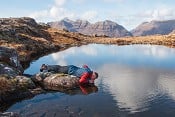
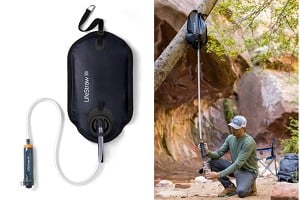

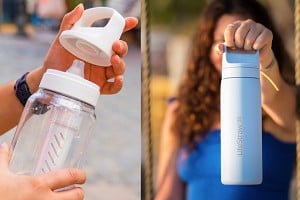


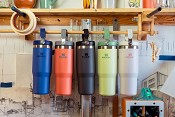
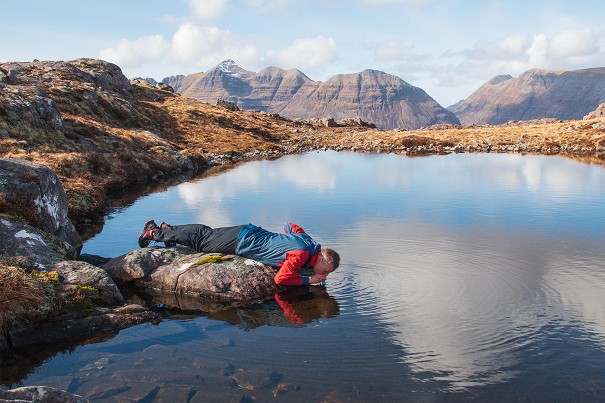
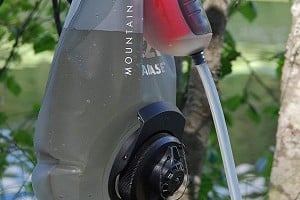
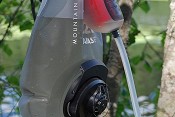
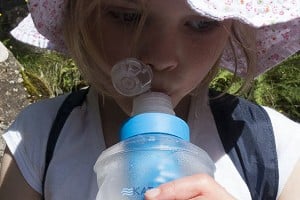



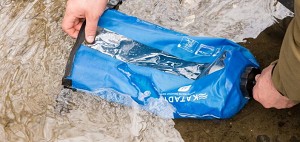


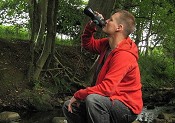
Comments